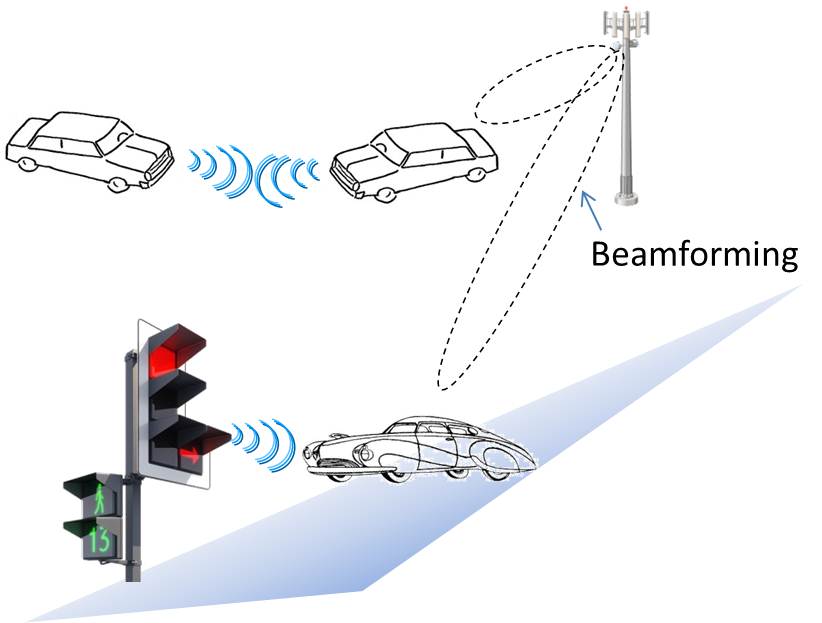Following is a Footwasher Media interview with Fanny Mlinarsky, President of octoScope, sponsored by element14. We discuss next generation OFDM and MIMO techniques and how they are evolving from the LTE and 802.11n technologies to the emerging technologies being developed for LTE-Advanced and 802.11ac solutions .

FM: Simply put, both technologies are evolving to run faster over a longer range and to support multiple simultaneous transmissions in the same space and frequency channel.
Faster data rates are achieved through the use of wider channels, higher orders of MIMO (multiple input multiple output) and higher order modulation. Although marketers refer to LTE as 4G, officially only LTE-A has been declared 4G by the ITU (International Telecommunications Union).
NTP: Does the new spatial multiplexing feature mean that we are NOT now running out of spectrum space as previously reported?
FM: Due to the scarcity of licensed spectrum, LTE-A has different challenges from those of 802.11ac that has over 400 MHz of spectrum in the unlicensed 5 GHz band. Licensed spectrum typically comes in slivers of a few MHz. Thus, to increase throughput, LTE-A has introduced spectrum bonding of non-contiguous bands. To accommodate a higher density of users, LTE-A supports small, short-range base stations, which calls for better management of cell-edge interference through CoMP (Coordinated multi-point) and ICIC (Advanced inter-cell interference coordination) techniques.
A data rate of 6.9 Gbps is achievable, or at least defined in the IEEE 802.11ac draft specification, “IEEE P802.11ac™/D1.4”. Achieving 6.9 Gbps requires QAM256 modulation and support for 8 spatial streams in a160 MHz wide channel. LTE-A is expected to reach up to 1 Gbps DL (downlink) and 500 Mbps UL (uplink) rates in a 100 MHz wide channel.
NTP: What new design considerations do these advanced specifications introduce for Wireless System Designers?
FM: MIMO algorithms use multiple synchronized radios (up to 4 for 802.11n and LTE; up to 8 for 802.11ac) to adapt to continuously changing conditions in the wireless channel. These techniques include:
- TX and RX diversity to add robustness to the communications when channel conditions are challenging (e.g. low SNR or high multipath)
- Spatial multiplexing to increase throughput by sending multiple simultaneous streams when channel conditions are favorable
- Beamforming to extend range and to enable MU-MIMO (multi-user MIMO)
- MU-MIMO to enable multiple stations to transmit simultaneously in the same frequency channel by focusing the antenna pattern. (See figure 1 above)
MIMO radios sense the conditions in the channel on a packet-by-packet basis and make instantaneous decisions on which of the above techniques to employ. Testing of these radios requires new generation over-the-air (OTA) technology, such as the octoBox controlled environment OTA test station.
NTP: How do the advanced solutions benefit engineers or humanity at large?
FM: Aside from the obvious fun with video and location-based apps, pervasive connectivity enabled by

Wi-Fi and LTE technologies is poised to help with vital public safety and E-911 communications. Spectrum in the 700 MHz band has recently been licensed by the FCC to carry a nationwide public safety LTE network, which for the first time will interconnect police, fire, ambulance and other emergency services coast-to-coast for effective management of large scale disasters and incidents.
For engineers, the work is clearly cut out: continue developing connected, location-aware platforms and applications. Can I poll my refrigerator from the supermarket to download a shopping list? Can my car sense a red light, while I’m distracted by talking on my smartphone, and apply breaks, avoiding a terrible accident?
NTP: What new features / products / services can end users expect as a result of these new specifications?
The initial release of 802.11ac will operate in 80 MHz channels, enabling over 3 Gbps data rates with throughput sufficient for transporting multiple HD video streams around a typical residence. LTE-A users will enjoy faster throughput and will have access to small base stations – femto- and picocells – to improve high-speed coverage indoors.
NTP: According to The Nielsen Company, 14% of U.S. mobile users (about 31 million people) now watch videos on their smartphones, a 35% increase over last year. Also, 29% of U.S. smartphone users stream music or Internet radio to their phones, up 66% from 2010. It's clear the way we use our phones is changing, what are the biggest challenges coming in the near future that designers should be thinking about now?
FM: The biggest challenges will be upgrading the backhaul infrastructure to support the video traffic being generated by modern smartphone applications. Today’s wireless backhaul is built for narrowband voice signaling and is poorly suited for the sudden dramatic increase in bandwidth usage. The innovations will come in the form of both higher capacity backhaul networks (e.g., new microwave backhaul links) and also in the intelligence introduced to the network architecture to manage traffic load, for example through charging higher fees during peak usage hours. Wi-Fi will increasingly be used to offload mobile traffic to landline access networks.
NTP: What do you think is the next "big shift" we'll see in how people use their phones? What do designers need to be thinking about when designing for this next "big shift"?
FM: Artificial intelligence. The HAL-9000 computer envisioned by Arthur C. Clark in ‘2001’ is a bit late to market now, but its time has definitely come with Apple's Siri. That is the transition from research to commercial use. With pervasive broadband connectivity, powerful parallel computing in the palms of our hands, sophisticated software development tools, voice recognition, wireless sensors and location awareness, the sky is the limit for where the imagination of platform and applications developers will take us next.